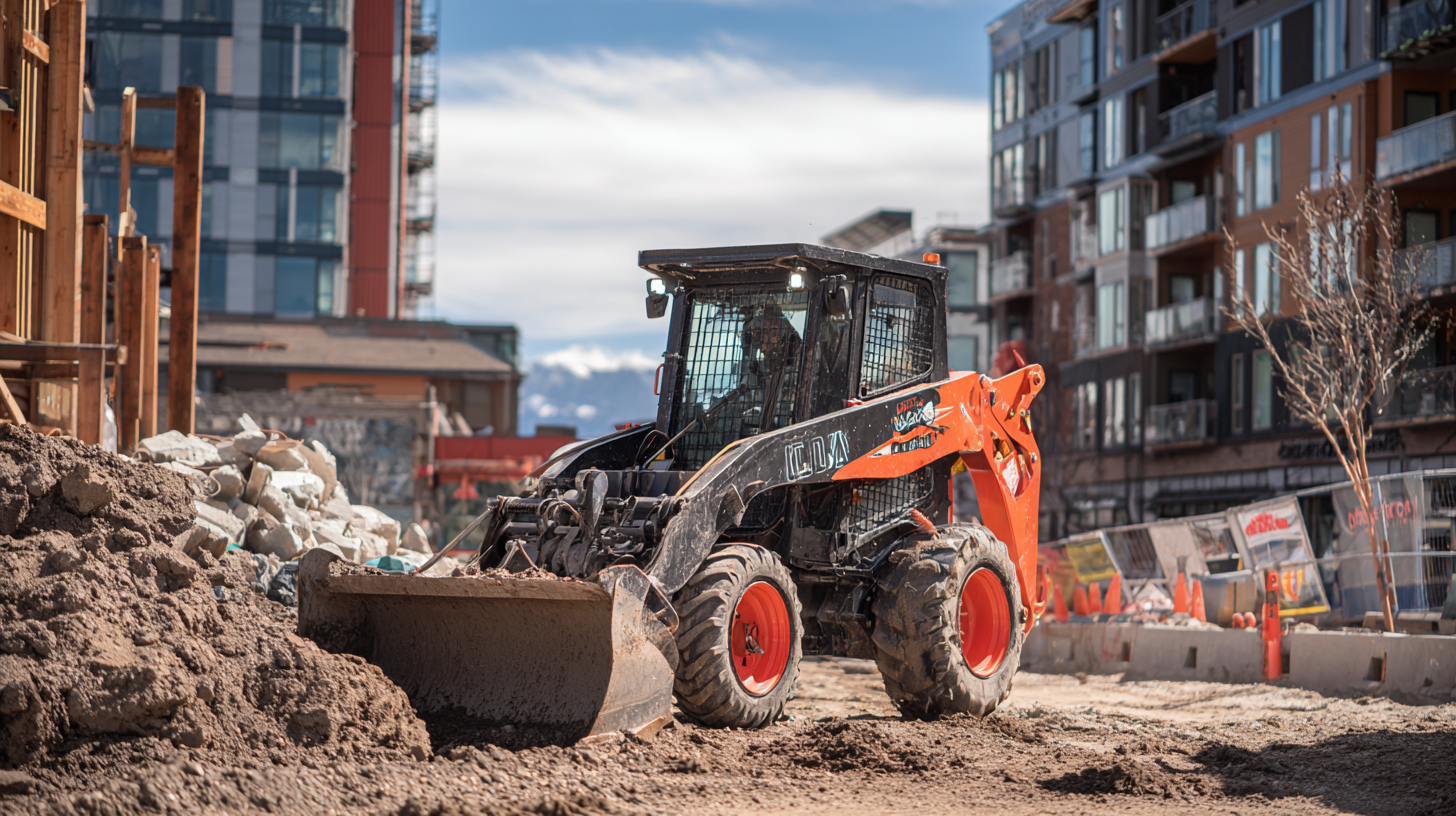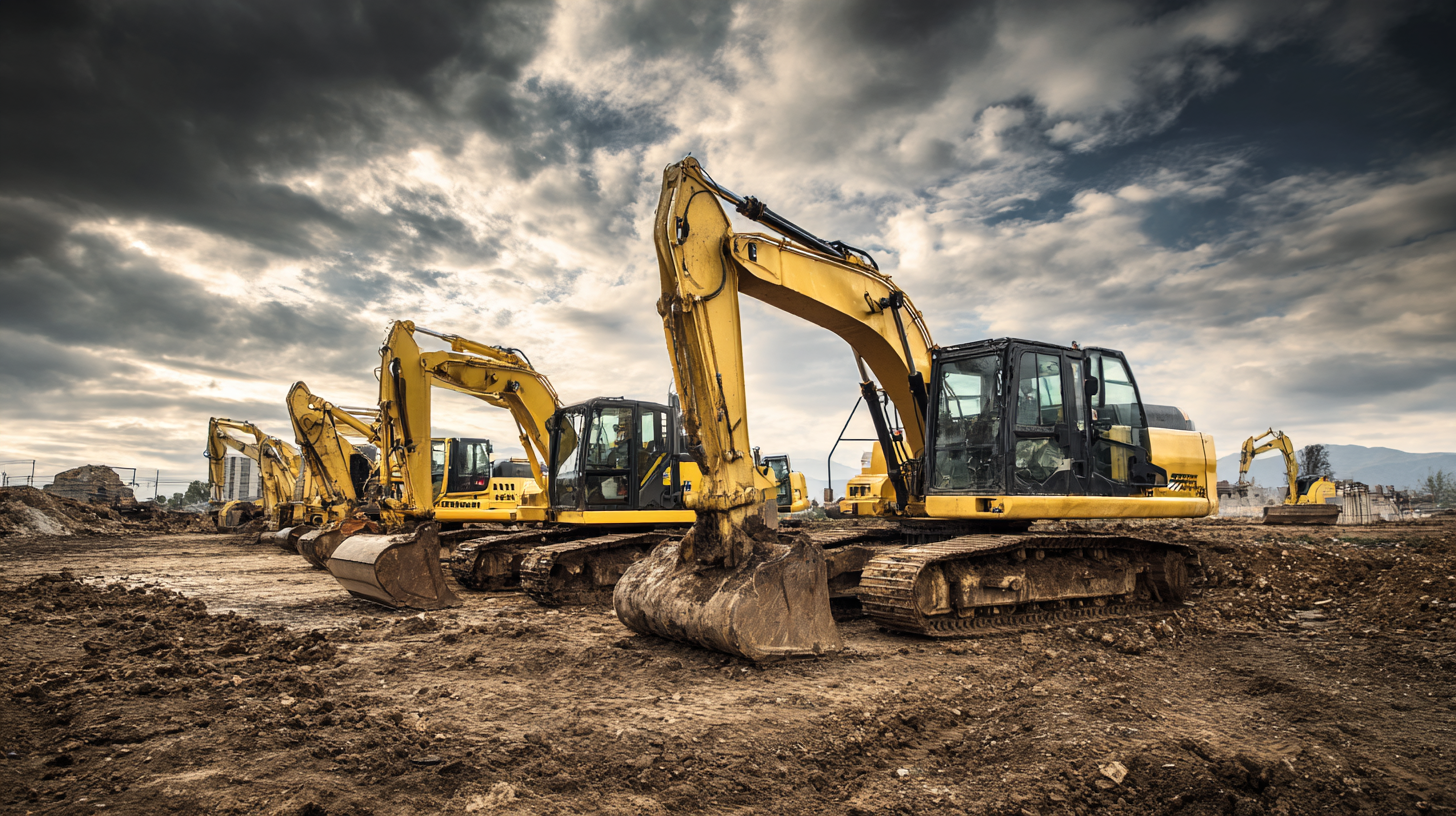Why Skid Loaders Are Essential for Modern Construction: Exploring Industry Trends and Efficiency Stats
In the ever-evolving landscape of modern construction, efficiency and adaptability are paramount, and one machine that embodies these qualities is the skid loader. With its compact design and versatile performance, the skid loader has become an indispensable tool on job sites around the globe. This article delves into the pivotal role that skid loaders play in enhancing productivity and streamlining various construction processes. We will explore industry trends that highlight the growing reliance on this equipment, along with efficiency statistics that underscore its impact on project timelines and costs. By examining how skid loaders can tackle a multitude of tasks—from excavation to material handling—we aim to provide insights that can guide construction professionals in maximizing their operational effectiveness. Join us as we uncover the multifaceted benefits of skid loaders and their essential place in the future of the construction industry.

The Evolution of Skid Loaders in the Construction Industry
The evolution of skid loaders in the construction industry reflects a significant transformation driven by technological advancements and changing industry demands. Once characterized by their simplicity and limited functionality, modern skid loaders now feature advanced automation technologies, enhanced power, and versatility that have made them indispensable on construction sites. According to the World Skid Steer Loader Market report, the global market is projected to grow at a compound annual growth rate (CAGR) of 4.5% from 2021 to 2026, highlighting the increasing reliance on these machines in various construction applications.
As skid loaders have evolved, so too have their capabilities. Contemporary models offer improved lifting capacities, better fuel efficiency, and enhanced operator comfort through ergonomic designs. For instance, the average weight capacity of skid loaders has increased from 1,200 pounds in the early 2000s to over 3,000 pounds today. This evolution allows operators to take on a broader range of tasks, from landscaping and excavation to snow removal and material handling, all while reducing the time and labor costs associated with manual labor.
**Tips:** When selecting a skid loader for your construction projects, consider the specific lifting capacity and attachments needed for your tasks. Regular maintenance is crucial for ensuring that your equipment performs at its best, as even minor issues can lead to significant downtime. Additionally, investing in operator training can maximize efficiency and safety on the job site.

Key Industry Trends Driving the Adoption of Skid Loaders
Skid loaders have become an indispensable tool in modern construction due to their unparalleled efficiency and adaptability. One of the key industry trends driving the adoption of skid loaders is the rising demand for compact machinery that can operate in confined spaces, such as urban construction sites. These versatile machines are capable of maneuvering through tight areas while still delivering powerful performance, making them a popular choice for contractors looking to maximize productivity without sacrificing space.
Another significant trend is the increased focus on automation and technology in construction equipment. Many skid loaders now come equipped with advanced features such as telematics and automated controls, allowing operators to analyze performance metrics in real-time. This data-driven approach not only enhances operational efficiency but also contributes to better decision-making, leading to cost savings and improved project timelines.
Tips for maximizing the efficiency of your skid loader include regular maintenance checks to ensure optimal performance and using the right attachments for specific tasks. Additionally, training operators on the latest technologies and best practices can further enhance the capabilities of skid loaders, allowing construction teams to get the most out of these machines in their projects.

Efficiency Metrics: How Skid Loaders Boost Construction Productivity
Skid loaders have become indispensable tools in modern construction, significantly enhancing productivity through their compact size and versatile functionality. These machines can maneuver in tight spaces where larger equipment lacks access, making them ideal for urban construction sites and residential projects. Their ability to quickly switch between various attachments, such as buckets, forks, and blades, further amplifies their efficiency, allowing operators to perform multiple tasks without the delays associated with equipment changeovers.
Efficiency metrics showcase the tangible benefits of using skid loaders on construction sites. Studies indicate that projects employing skid loaders can see a productivity increase of up to 25%, thanks to reduced labor times and the ability to complete tasks more swiftly. Additionally, their fuel efficiency contributes to lower operational costs, making them a financially savvy choice for contractors. The combination of high maneuverability, quick adaptability, and effective fuel usage positions skid loaders as critical contributors to meeting the increasing demands of the construction industry.
Comparative Analysis: Skid Loaders vs. Traditional Equipment
The rise of skid loaders in the construction industry has prompted a reevaluation of traditional equipment. Unlike backhoes and bulldozers, skid loaders offer remarkable versatility and efficiency. With their compact size and maneuverable design, they can easily navigate tight construction sites where larger machinery might struggle. This agility allows operators to complete tasks such as digging, lifting, and grading with greater speed and ease. The comparative nimbleness leads to increased productivity and reduced labor costs, making skid loaders an attractive option for modern construction needs.
In terms of operational efficiency, skid loaders often outperform traditional equipment. Their quicker attachment changes and ability to handle various tasks with a single machine reduce downtime and enhance workflow. For instance, while a backhoe might require multiple passes for certain tasks, a skid loader can often complete them in fewer moves, thanks to its exceptional lift and dump capabilities. As the construction industry continues to emphasize efficiency and cost-effectiveness, the advantages of skid loaders over traditional machinery become increasingly evident, positioning them as a staple in contemporary project management strategies.
Why Skid Loaders Are Essential for Modern Construction
Future Innovations: What’s Next for Skid Loader Technology
As the construction industry continues to evolve, skid loader technology is set to experience significant innovations aimed at enhancing performance and efficiency. According to a report from ResearchAndMarkets, the global skid steer loader market is projected to grow at a compound annual growth rate (CAGR) of 5.7% from 2022 to 2026. This growth underscores the increasing reliance on skid loaders in various construction applications, particularly due to advancements in technology such as improved hydraulics and automation features.
One major trend is the integration of telematics systems into skid loaders, allowing operators to monitor equipment performance in real-time. This capability not only enhances operational efficiency but also provides valuable data for predictive maintenance, reducing downtime. A study by the Associated General Contractors of America reveals that companies utilizing advanced technology in their machinery see productivity increases of up to 20%. As manufacturers invest in electric-powered models to meet rising sustainability demands, these innovations will likely redefine the capabilities and applications of skid loaders in the construction landscape, paving the way for smarter job sites.
Why Skid Loaders Are Essential for Modern Construction: Exploring Industry Trends and Efficiency Stats
| Dimension | Data |
|---|---|
| Average Skid Loader Operating Weight | 3,000 - 4,500 lbs |
| Common Horsepower Range | 40 - 100 HP |
| Typical Load Capacity | 1,000 - 2,500 lbs |
| Fuel Efficiency | Up to 2.5 gallons/hour |
| Market Growth Rate (2023) | 5.2% CAGR |
| Average Life Span | 10,000 - 12,000 hours |
| Number of Attachments Available | Over 100 |
| Customer Satisfaction Rate | 85% |
| Innovative Features Introduced (2023) | Autonomous operation, advanced telematics |
Related Posts
-

What Are the Advantages of Using Small Utility Tractors for Your Farm
-

The Ultimate Guide to Finding the Most Affordable Compact Tractor for Your Needs
-

How to Choose the Right Small Tractor Mower for Your Lawn Care Needs
-

How to Maximize Efficiency with Your Hay Baler for Higher Crop Yields
-

Maximizing Efficiency with Utility Tractors for Modern Agricultural Practices
-

Exploring Unique Applications of Round Balers in Modern Agriculture